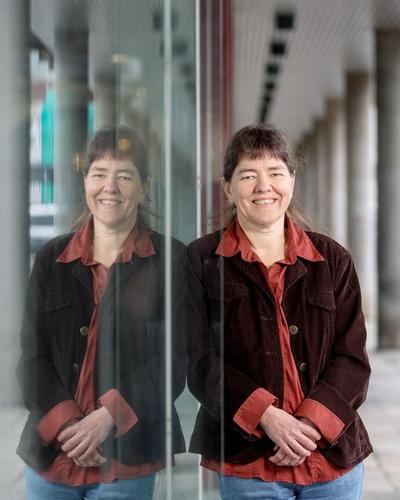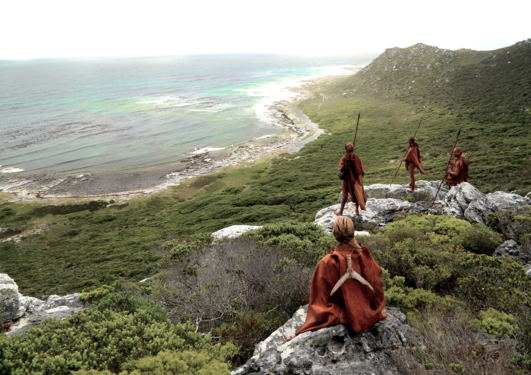Symbolic mind and social organisation
As we want to understand technological innovations and early symbolic activities, we need to look at neurobiological, cognitive, and social processes that were driving them. Did cognitive changes accelerate behavioural variability?

Main content
The Middle Stone Age (MSA) was a watershed in human history. Particularly in the period between 70 000 and 100 000 years ago, many ‘typically human’ behaviours became discernible for the first time, in or around the cluster of sites studied by SapienCE scientists, such as Blombos Cave, the Klipdrift Complex, and Klasies River main site.
Thoughts of the past
Examples of such behaviours include the use of novel tool types and raw materials, the processing of colour pigments, the making of beads for ornamentation, the conception of visual sign systems, and the creation of abstract drawings. As we want to understand these technological innovations and early symbolic activities, we need to look at the neurobiological, cognitive, and social processes that were driving them.
Several strategies can be employed to address this exciting question. One is to draw on well-known cases of technological and behavioural innovation across cultures. By studying how people, throughout history, have invented, learned, shared and applied knowledge, we can make inferences about the contexts in which MSA innovations were conceived. This allows us to decide, for example, whether a novel behaviour was a response to changes in the social or natural environments, a result of demographic shifts, an adaptation to more or less intensive social interactions among groups, or a product of social transmission and accumulation (‘ratcheting’).
Another strategy is to look at how people generate, process, and combine information at the neural and cognitive levels. For instance, neuroscientific methods such as brain-imaging technologies allow us to identify the neural networks involved in those kinds of tool making, tool use, and symbol perception that we observe in the MSA. Such studies help us to understand the range of mental abilities that are required to create specific objects and therefore must have been available to those who first produced such objects.
Social and environmental factors
Finally, cultural evolution studies offer useful models of how artefactual and behavioural traditions spread over space and time, and allow us to investigate the social and environmental factors underlying such processes. For instance, phylogenetic methods from evolutionary biology can tell us how likely it is that cultural traditions are related, which features an ancestral artefact would have had, and which properties coevolved or converged over time.
Each of these strategies hinges on our knowledge of present-day cognition and its cultural variability, and each contributes towards our understanding of how early sapiens cognition has unfolded in the MSA – and ever since.





